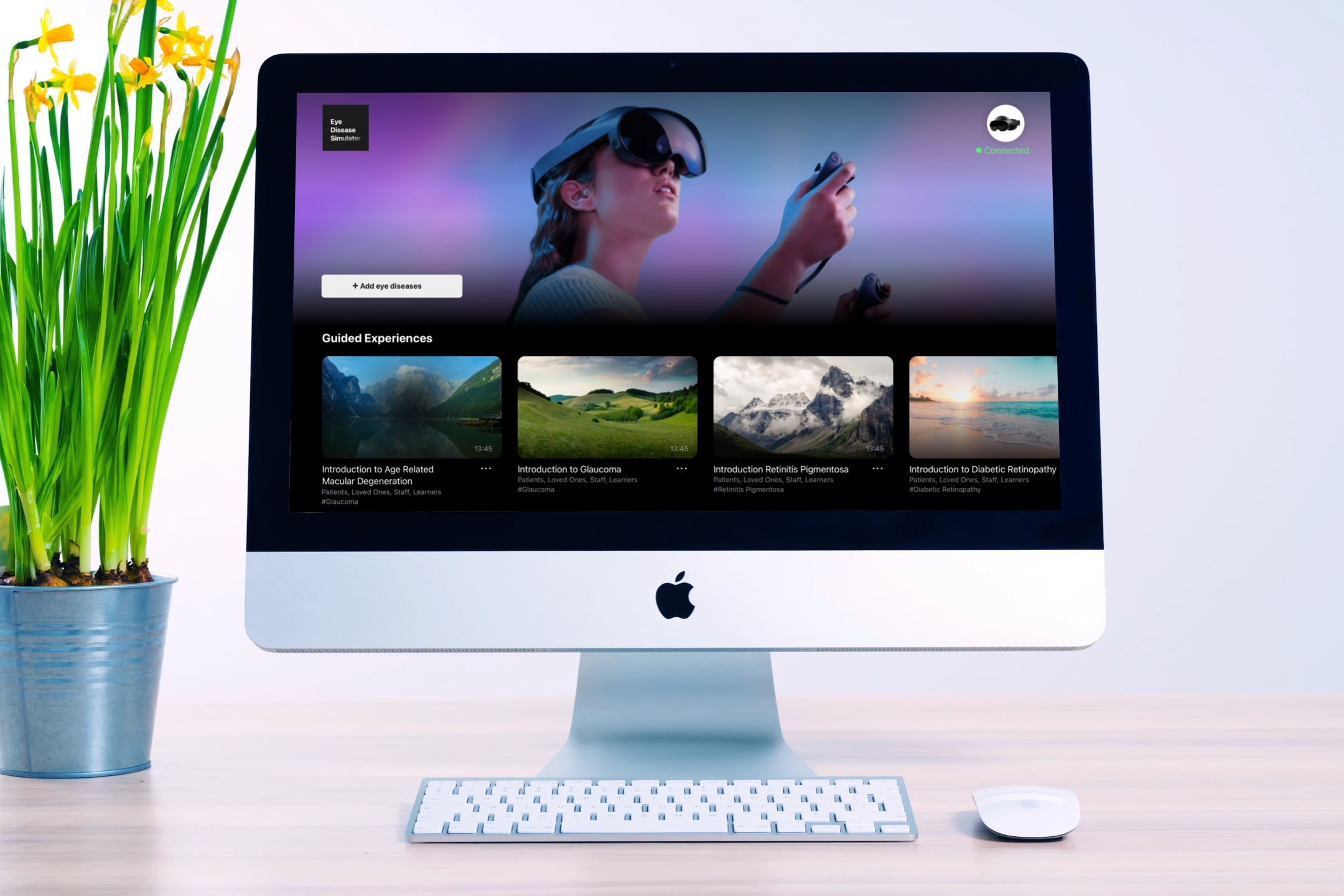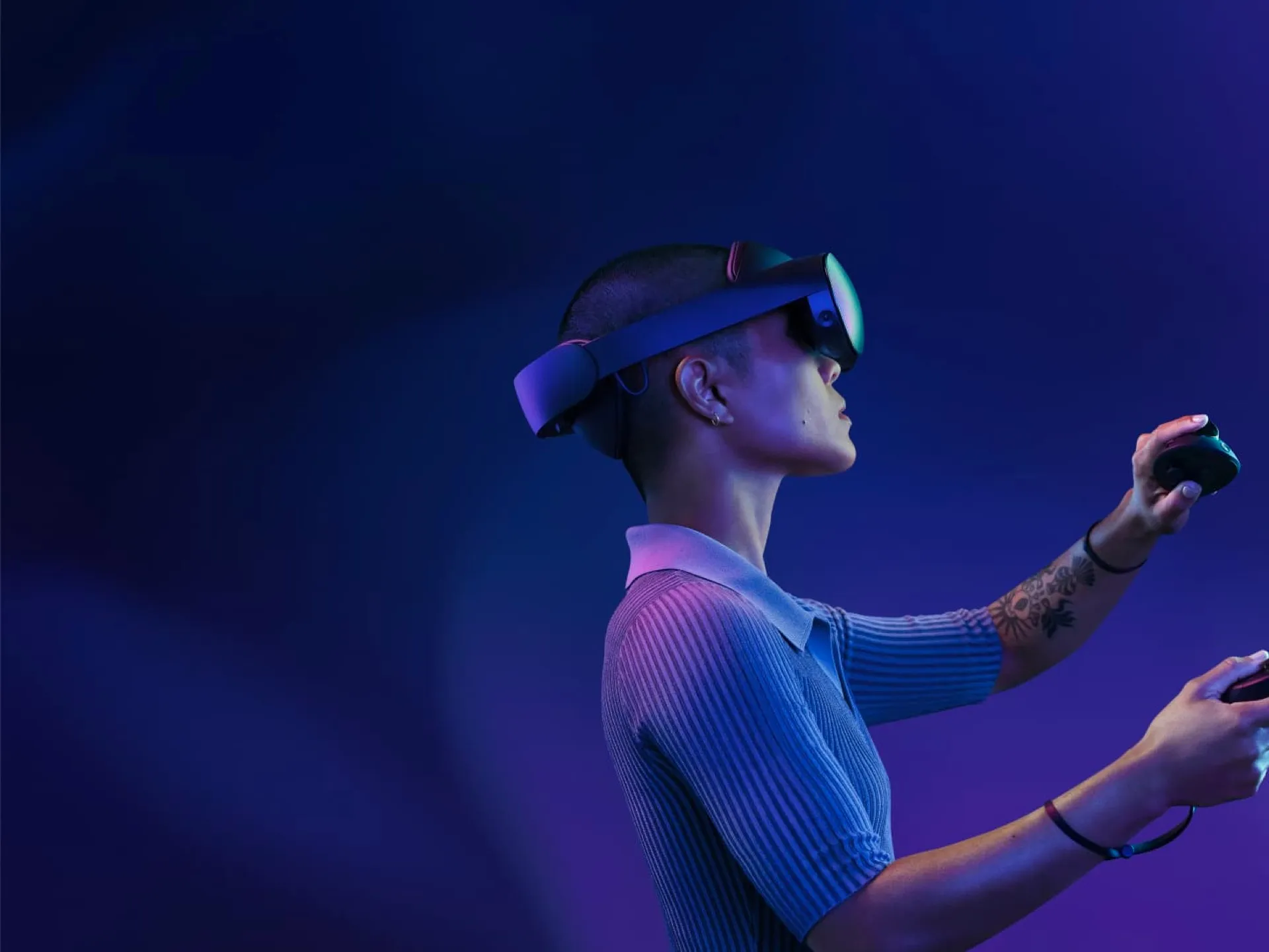Features & Specifications



Empowering Better Home Care: Personalized visual impairment assessments tailored to your living environment.
for Meta Quest Pro
Fully Immersive Mixed Reality

Optometry & Ophthalmology Practices
Go beyond a brochure. Teach patients what their eye disease is truly like to live with first-hand before it's too late to take action. Fully guided experiences walk users seamlessly through the disease progression for the greatest impact in the shortest amount of time.

Architecture & Product Development
Integrate considerations of visual impairments into your design flow. With a globally aging population, and over 370M people with eye disease, designing for the full population is essential.

From better educating the next generation of doctors, to transforming a loved one's perspective at-home - Eye Disease Simulator improves the complete patient picture.

Eye Disease Simulator is a mixed reality software application deployed on Meta Quest Pro. It creates a 1st person perspective of life through the eyes of someone with various eye diseases at various stages. Blind spots and other vision impairments associated with these diseases are mapped to the users exact eye movements, allowing the most realistic 1-to-1 simulation experience.
Experience a gradual or sudden distortion and loss of central vision. This manifests as blurry, dark, or white out areas in the middle of the visual field. Fine details become harder to discern, affecting activities like reading, driving, or recognizing faces. Peripheral vision usually remains unaffected.
Face a progressive loss of peripheral or side vision, typically described as tunnel vision. This visual impairment starts subtly and can be unnoticed at first, but can lead to significant vision loss over time. Central vision, necessary for tasks like reading or recognizing faces, remains clear until late stages of the disease.
Experience a gradual yet profound loss of peripheral vision, leading to tunnel vision. Night blindness is typically an early symptom, making it difficult to navigate in low light. Over time, the field of vision continues to narrow, potentially resulting in total vision loss.
Face blurry or fluctuating vision, impaired color perception, or spots and dark strings (floaters) appearing in your visual field. In severe cases, vision loss may occur, predominantly caused by the leaking or hemorrhaging of damaged blood vessels in the retina.
Purpose: Enhance patient care by offering personalized assessments of living conditions for those with visual impairments using the EDS technology.
Target Audience: Individuals with eye diseases and their caregivers, community outreach organizations, and healthcare providers.
Home Visit: Trained assessors visit homes with the EDS to evaluate how a particular eye condition might affect an individual’s interaction with their environment.
Simulation: Use the EDS to simulate the patient’s specific eye condition for family members and caregivers, fostering better understanding and empathy.
Environment Evaluation: While the simulation is active, assessors identify potential hazards, challenges, and areas for improvement within the home environment.
Report Generation: Post-assessment, generate a comprehensive report detailing the identified issues and providing practical solutions.
Product Suggestions: Based on the findings, suggest specific products or modifications that can improve the individual’s quality of life.
Follow-up Visits: Schedule follow-up visits to monitor progress, reassess needs, and adjust recommendations as necessary.
Healthcare Providers: Collaborate with healthcare providers for patient referrals and continuous monitoring.
Community Outreach: Work with community organizations to reach a wider audience and conduct group awareness and education sessions.
Feedback Loop: Regularly gather feedback from users and assessors to refine the assessment process, make it more effective, and enhance user satisfaction.
Tech Updates: EDS technology will continue to expand, including adding new diseases, making all updates available for assessments.
Research and Development: EDS will continue researching potential enhancements and innovative applications of EDS in the field of home care and patient experience.

From better educating the next generation of doctors, to transforming a loved one's perspective at-home - Eye Disease Simulator improves the complete patient picture.
